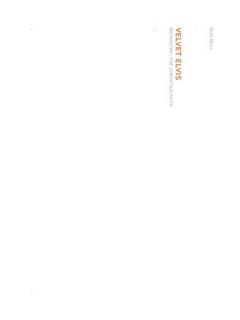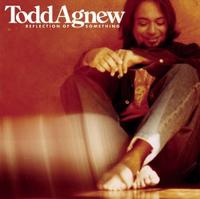Rob Bell has written a book that I was unprepared for, has given information and insight that I was not looking for, and has inspired me and encouraged me in a way that I didn't know I needed. And now I'm thankful that he's done all this, however unintentionally on his part. And I'm anxious to see how "all this" plays out in real life.
 Velvet Elvis
Velvet Elvis (copyright 2005; Zondervan) gets its title from the framed velvet painting that hides behind other knick-knacks and memories in Bell's basement. A picture of a changing
Elvis - not the young one, not the enlarged older version, but the middle maturing King. In the corner is the artist's signature, a single "R." That's all the artist felt was needed to identify this particular work of art. Had the artist then held a press conference and announced that this lone portrait was the definitive work of its kind, and that there was no need for anyone else to ever paint Elvis on canvas again, he would've been laughed at and mocked. But there's almost always room for a different perspective, for "repainting" your subject.
The tradition then is painting, not making copies of the same painting over and over. The challenge of the art is to take what was great about the previous paintings and incorporate that into new paintings. And in the process, create something beautiful and meaningful - for today. (p. 13)
Acceptance of doctrinal and propositional truth doesn't change a person's life; only God can do that, and the mental assent to truth can be meaningless. But the Bible's narrative tells of a new way of living, a new way of relating, that goes beyond simple mental assent.
Over time when you purposefully try to live the way of Jesus, you start noticing something deeper going on. You begin realizing the reason this is the best way to live is that it is rooted in profound truths about how the world is. You find yourself living more in sync with how the universe is at its deepest levels. (p. 21)
I affirm the historic Christian faith, which includes the virgin birth and the Trinity and the inspiration of the Bible and much more. I'm a part of it, and I want to pass it on to the next generation. I believe that God created everything and that Jesus is Lord and that God has plans to restore everything. But if the whole faith falls apart when we reexamine and rethink one spring [from his metaphor of a trampoline having supportive springs to hold the whole together for bouncing], then it wasn't that strong in the first place, was it? (p. 27)
Bell goes on the extol the value of questions as a sign of humility in the first movement (here, "movements" are used instead of chapters), mulling over truth in conversation rather than simply basing life on dogmatic statements. We've lost some of the fun of questions and stories, which was Jesus' favorite way to interact with folks around Him.
Bell takes the reader through thoughts on Truth, rabbinical tradition in discovering and applying truth, "binding and loosing" and a fresh perspective on "yokes", and how disciples viewed themselves and the Rabbi they followed. Rather than dismissing the Bible or explaining it all away for justifying a "new way", Bell seems to me to be taking greater care with, and giving greater honor to, the scriptures in their contemporary context and in their present relevance.
Another truth about the church we're embracing is that the gospel is good news, especially for those who don't believe it. (p. 166)
Sentences like this should challenge us to be better people, better Christians, better neighbors in our world. What a radical concept, blessing others even if they're not Christians, serving people even if they disagree or don't hold to the same doctrine. What the church has lost in hypocrisy and dogmatism might be found in blessing the multitudes as God first promised Abraham.
As a Christian looking to grow and make a difference today, finding out that it's not just about having "eternal life in heaven" and that it's easy to make mistakes along the way, too, I appreciate Bell's attempt to engage the world around him in a way that will bless others even if they disagree, and in a way that will still show integrity and love within the community. And the mark of a good book, in this case, is that when it's been finished, the reader wants more. I'm going to be spending some time going back through the stories and history shared for even more perspectives on Christianity's updated velvet painting.




































